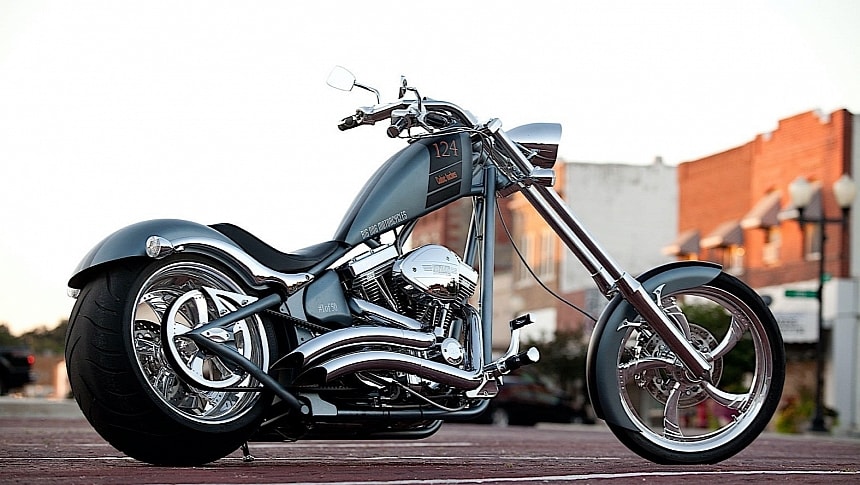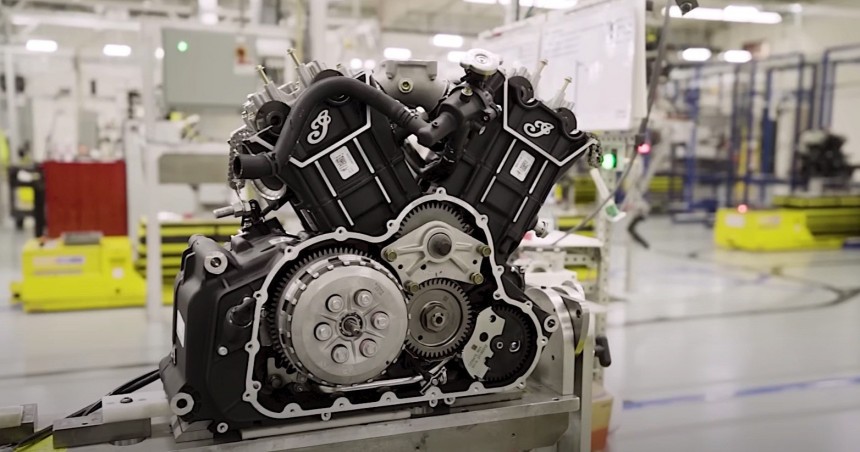There are many things bike riders don't agree on, with topics for discussion ranging from the type of ride that's best suited to serve a certain purpose to the best colors to use on a bike. But for those who know a bit more about motorcycles, a favorite is the difference between a carbureted and a fuel-injected motorcycle.
The discussion may seem a bit mute in 2024, at a time when a very small number of production motorcycles still use carburetors, but you do have to remember that there are still plenty of custom garages, for instance, that prefer to go down the path of carburation, for the simple reason that it best fits certain kinds of builds.
Sure, it may not be something beginner riders are very much into, seeing how for many of them the only option on the table is fuel injection, but the older riders among you might still feel a bit nostalgic. So, for the sake of that, and also on account of some other considerations, we'll go ahead with our little moto guide we have here.
One of the most divisive discussions among motorcycle enthusiasts is the difference between carbureted and fuel-injected bikes, an aspect that in some circles supersedes most of the other topics people usually quarrel over, including price, engine power levels, weight, or things as trivial as the bike's brand.
We're past the point when you have to take into consideration a choice between carburation and fuel injection when in the market for a new ride, but there may be times when you want to go for an older bike, or simply have yourself a custom. If that's the case, there are a number of things to consider. Among them, things such as your riding style, location, ambient temperature, and so on.
Although there are not that many motorcycles that still use carbureted engines, because almost all current designs have switched to fuel injection, one can't stop to still appreciate some of the advantages of carburation.
One marjor such advantage carbs have over fuel injection is that they are simpler to maintain and repair. In a nutshell, while technically carb problems can usually be fixed on the side of the road with basic tools, problems with the fuel injection system usually require replacing parts in a specialized shop.
On top of that, the cost of a carbureted motorcycle tends to be lower than that of a fuel-injected one – unless, of course, we're talking about high-profile custom rides.
A carburetor is a demand device dependent upon the velocity of the air entering the venturi to create the air/fuel mixture that feeds the engine, and also maintains a series of fuel circuits to help maintain the best possible fuel mixture. The ability of a carburetor to provide a good air/fuel mixture is very dependent upon the velocity of the air going through it.
Fuel injection, on the other hand, generally increases the cost of the bike, but it also provides much better cold start capabilities, better throttle response, better fuel efficiency, and in the end, less maintenance.
In the case of an electronic fuel injection system, the required fuel amount for each RPM and engine load condition is already preloaded in the ECU. Once this primary fuel amount is known, the ECU further adjusts the fuel mixture for the engine and air intake temperatures. In many cases, the mixture will even be adjusted for the barometric pressure and altitude.
Cold start capabilities are some of the first things you'll hear at a debate on carb versus fuel-injected bikes. It's well known that carbureted engines need some time until they are ready to hit the road at low temperatures and require something called a choke system to get started.
That's because the cold fuel in the bike's system tends to stick the cylinder walls as a result of condensation, and that leads to a mixture too lean for the engine to start. What the choke system does is add more fuel to compensate for the one sticking to the walls.
When it comes to fuel injection, all you have to do is turn the key and hit the start button. But such simplicity in operation comes with a tad more complex mechanical setup that requires a fuel pump in the tank, an electronic engine controller and multiple sensors.
In fuel-injected bikes a computer controls the fuel delivery system. An ECU reads whatever various sensors located on the vehicle have to tell it and determines how much fuel to allow the engine to have based on this information. The sensors are used to feed data like RPM, engine temperature, air temperature, throttle position, manifold pressure, and crankshaft position, among other things.
To adjust the quantity, the computer will open and close the injectors allowing fuel gasoline into the engine based on the sensor inputs and the fuel map programmed into the computer.
So, now that you know all of the above, which one do you prefer, if you really had to choose?
Sure, it may not be something beginner riders are very much into, seeing how for many of them the only option on the table is fuel injection, but the older riders among you might still feel a bit nostalgic. So, for the sake of that, and also on account of some other considerations, we'll go ahead with our little moto guide we have here.
One of the most divisive discussions among motorcycle enthusiasts is the difference between carbureted and fuel-injected bikes, an aspect that in some circles supersedes most of the other topics people usually quarrel over, including price, engine power levels, weight, or things as trivial as the bike's brand.
We're past the point when you have to take into consideration a choice between carburation and fuel injection when in the market for a new ride, but there may be times when you want to go for an older bike, or simply have yourself a custom. If that's the case, there are a number of things to consider. Among them, things such as your riding style, location, ambient temperature, and so on.
Although there are not that many motorcycles that still use carbureted engines, because almost all current designs have switched to fuel injection, one can't stop to still appreciate some of the advantages of carburation.
On top of that, the cost of a carbureted motorcycle tends to be lower than that of a fuel-injected one – unless, of course, we're talking about high-profile custom rides.
A carburetor is a demand device dependent upon the velocity of the air entering the venturi to create the air/fuel mixture that feeds the engine, and also maintains a series of fuel circuits to help maintain the best possible fuel mixture. The ability of a carburetor to provide a good air/fuel mixture is very dependent upon the velocity of the air going through it.
Fuel injection, on the other hand, generally increases the cost of the bike, but it also provides much better cold start capabilities, better throttle response, better fuel efficiency, and in the end, less maintenance.
In the case of an electronic fuel injection system, the required fuel amount for each RPM and engine load condition is already preloaded in the ECU. Once this primary fuel amount is known, the ECU further adjusts the fuel mixture for the engine and air intake temperatures. In many cases, the mixture will even be adjusted for the barometric pressure and altitude.
Cold start capabilities are some of the first things you'll hear at a debate on carb versus fuel-injected bikes. It's well known that carbureted engines need some time until they are ready to hit the road at low temperatures and require something called a choke system to get started.
When it comes to fuel injection, all you have to do is turn the key and hit the start button. But such simplicity in operation comes with a tad more complex mechanical setup that requires a fuel pump in the tank, an electronic engine controller and multiple sensors.
In fuel-injected bikes a computer controls the fuel delivery system. An ECU reads whatever various sensors located on the vehicle have to tell it and determines how much fuel to allow the engine to have based on this information. The sensors are used to feed data like RPM, engine temperature, air temperature, throttle position, manifold pressure, and crankshaft position, among other things.
To adjust the quantity, the computer will open and close the injectors allowing fuel gasoline into the engine based on the sensor inputs and the fuel map programmed into the computer.
So, now that you know all of the above, which one do you prefer, if you really had to choose?







